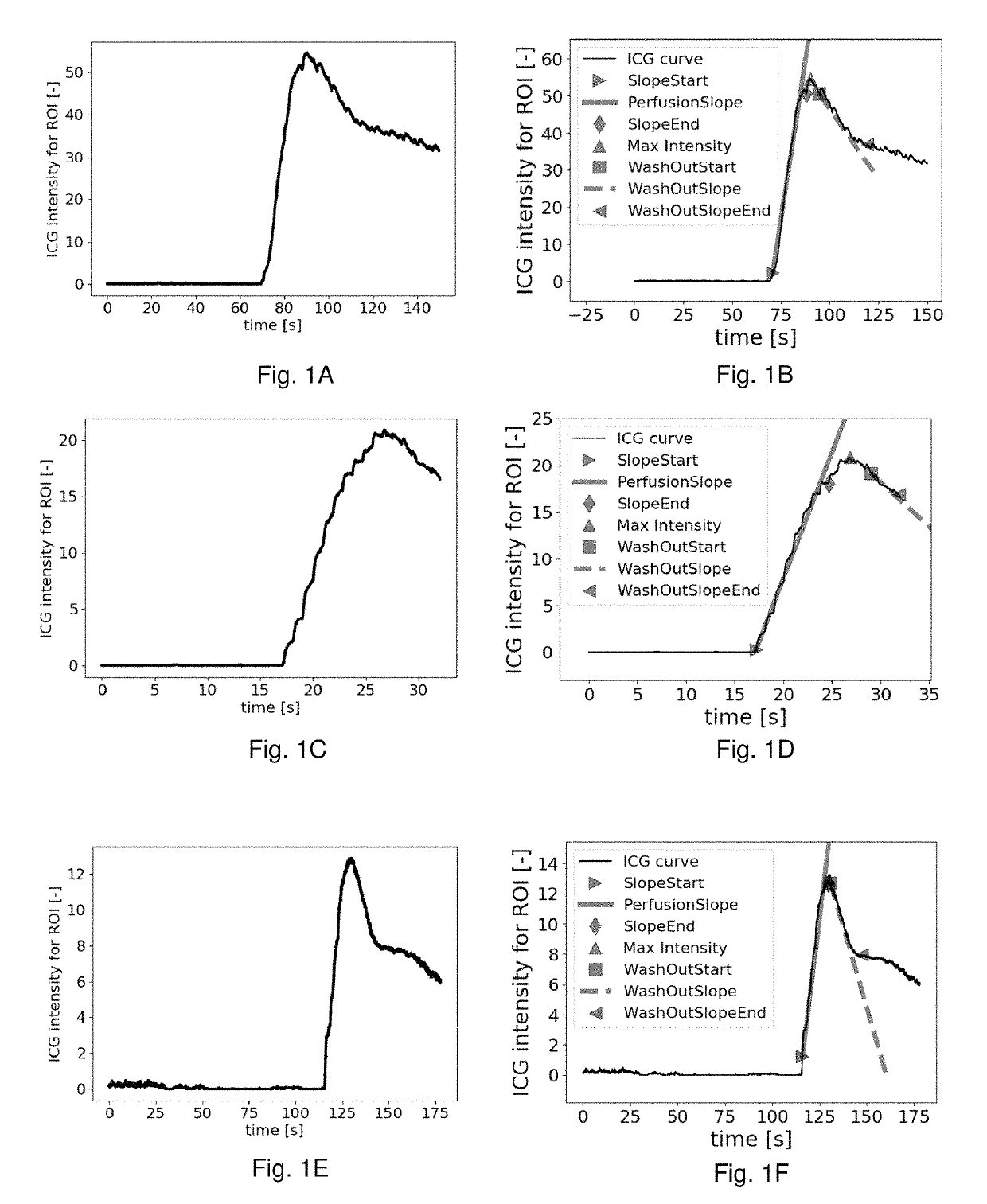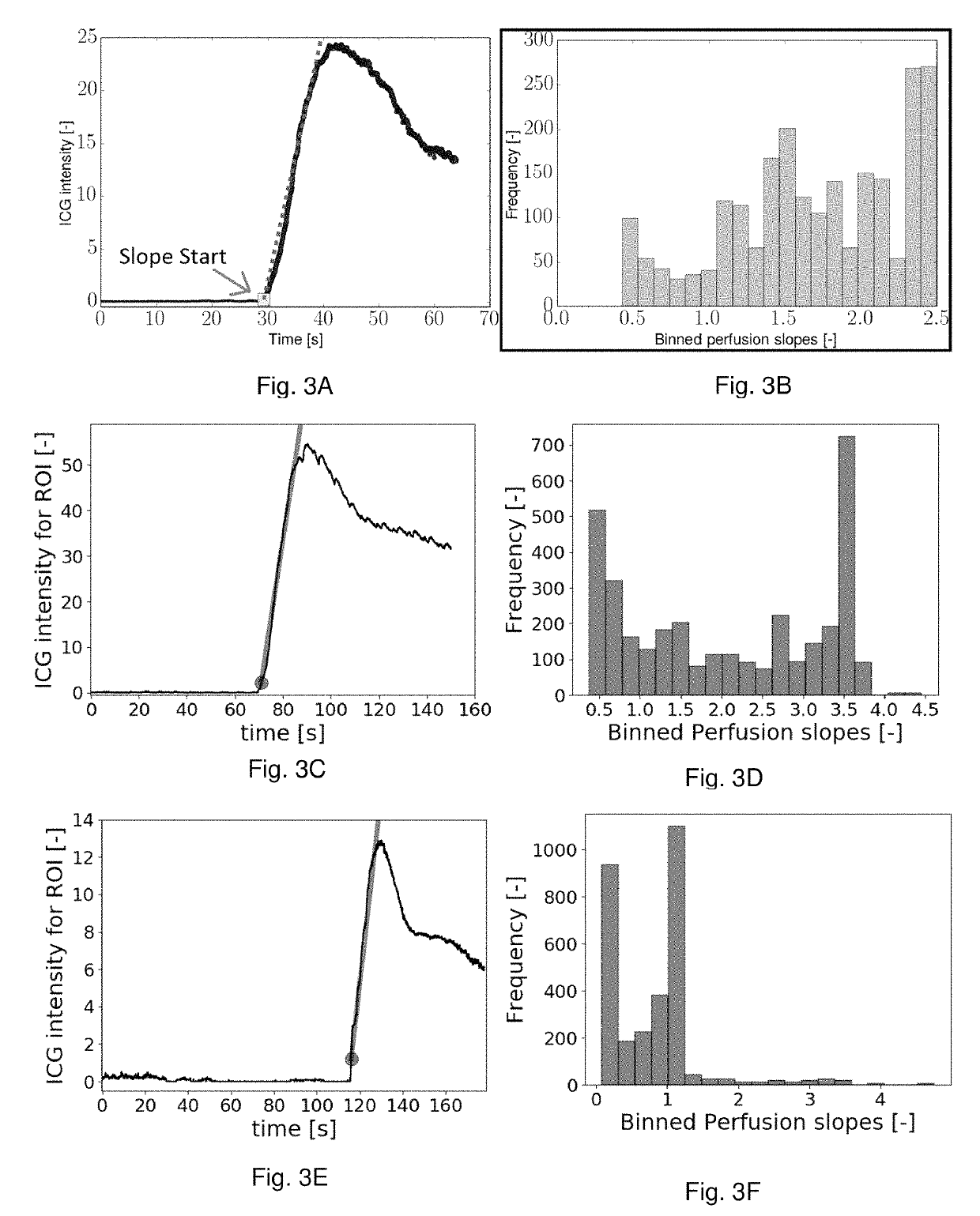System and method for assessing perfusion in an anatomical structure
a technology of anatomical structure and hemodynamics, applied in the field of system for measuring and assessing hemodynamics in anatomical structure, can solve the problems of frequent postsurgical complications in connection with anastomosis in the gastrointestinal tract, tissue damage, and anastomotic leakage, so as to reduce post-surgical complications, reduce the risk of leakage, and prolong the hospital stay.
- Summary
- Abstract
- Description
- Claims
- Application Information
AI Technical Summary
Benefits of technology
Problems solved by technology
Method used
Image
Examples
examples
[0110]FIGS. 1A, 1C and 1E show examples of intensity curves acquired from tissue after a bolus of ICG has been provided to a subject, e.g. from a region of interest in a video sequence. The same kind of data could be obtained if another contrast agent was used. The intensity is substantially zero until a steep rise in intensity indicates the passage of ICG molecules in the imaged tissue, the ICG molecules being excited to fluoresce. The peak in intensity is followed by the gradual washout of the ICG molecules. The intensity is indicated with arbitrary units. FIGS. 1B, 1D, and 1F show the corresponding intensity curves where the hemodynamic parameters perfusion slope, slope start, slope end max intensity, washout slope, washout start and washout slope end have been calculated and are indicated in the graphs.
[0111]FIGS. 2A-2F show three examples illustrating the herein disclosed approach of determining the point in time where the perfusion slope starts, i.e. slope start. FIGS. 2B, 2D ...
PUM
 Login to View More
Login to View More Abstract
Description
Claims
Application Information
 Login to View More
Login to View More - R&D
- Intellectual Property
- Life Sciences
- Materials
- Tech Scout
- Unparalleled Data Quality
- Higher Quality Content
- 60% Fewer Hallucinations
Browse by: Latest US Patents, China's latest patents, Technical Efficacy Thesaurus, Application Domain, Technology Topic, Popular Technical Reports.
© 2025 PatSnap. All rights reserved.Legal|Privacy policy|Modern Slavery Act Transparency Statement|Sitemap|About US| Contact US: help@patsnap.com



